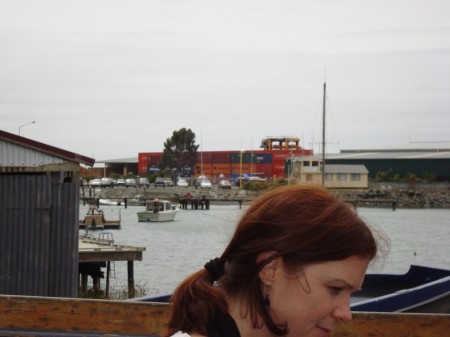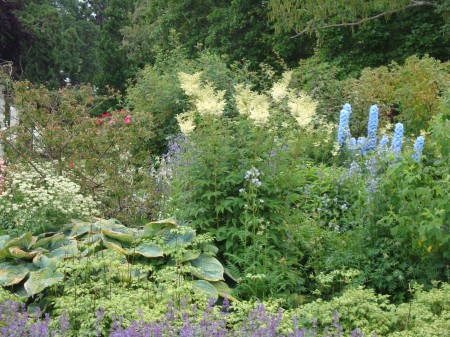Diet Is Related To Hair Loss:
Conventional treatment of male hair loss in the past has been with topically applied preparations such as Minoxidil. But this is an expensive treatment which also has some bad side effects, as it is absorbed through the pores of the scalp and into the blood. One bad effect is that it can lower the blood pressure.
Rather than using chemicals to encourage hair growth, it is better to use Dietary measures, with Multivitamins, Homeopathy, Herbs, and Massage. These things will naturally enhance your good health and help to prevent hair loss.
Multivitamins can help the condition of hair loss in males. But with those additional vitamins, it is important to consider the diet. Multivitamins will be much more effective when the diet is corrected.
How diet affects hair growth: To give you an example – In Japan, before World War II, men rarely became bald. The Japanese diet before the war was traditional: It was an alkaline macrobiotic diet based around rice, which included an abundance of sea-foods and vegetables. Only small amounts of animal products were used, and acid-forming wheat products and dairy products were almost unheard of.
After the war, the Japanese diet became more Westernized according to “New Choices in Natural Healing”, edited by Bill Gottlieb from ‘Prevention’ magazine, and published by Rodale Press, Pennsylvania, 1995. More animal foods, meats, fats and milks, and sugar, and wheat products, were introduced, and people began to eat less of the healthy nourishing traditional foods.
It has been observed by researchers that balding began to occur in Japanese men after the second World War. This is when the Japanese diet became more acidic, and less nourishing. It is also possible that the effects of radiation from the dreadful nuclear bomb at Hiroshima might have affected the health of people all over the country, resulting in male hair loss.
Some researchers think that diets high in animal meats and other products raise testosterone levels in men, and that this is the main physiological reason for men going bald. However, I think that the general acidity of the Western diet, and its lack of nutrients, is related to hair loss in both men and women.
Importance Of Iodine, Zinc and Selenium For Hair Growth: These two minerals are very important for the health of the hair. The Japanese macro-biotic diet contains plenty of fresh and dried sea-weeds and fish, and these foods are very high in iodine, zinc, and other nutrients. If your hair is balding, then supplements of zinc, iodine and selenium could be taken to supplement a good nourishing diet.
The Macro-biotic diet is very alkaline. Alkaline diets encourage hair growth. It also is high in roughage, which is an important factor in keeping the bowels healthy and avoiding auto-intoxication. Keeping the bowels clean and functioning properly is going to help your hair growth, as this will help the absorption of important minerals and vitamins. A diet which includes mainly rice, soy bean products such as tofu, fish, sea weed and vegetables is a healthy, alkaline diet which is rich in nutrients. This is very healthy for the hair and for the general health.
The Western diet, which often includes bread, cakes, meat and dairy products, is more acid forming and is not so good for the general health. It also encourages sluggish bowels, which is not good for the health. Special effort needs to be made to get the diet more alkaline and more nutritious. Excluding bread and wheat, sugar, and dairy foods and replacing these foods with more rice, vegetables, fish, and fish oils, will help your hair growth.
Acidophilus Can Help Hair Growth: A daily addition of acidophilus in the diet can enormously benefit the digestion, and the utilization of vitamins and minerals. This, in turn, will help those vital hair-growth nutrients to get to the hair follicles.
Taking a Handful of Ground Sesame Seeds: This amount of sesame seeds will supply more calcium than a cup of milk. The sesame seeds will provide essential fatty acids for the benefit of your general health, your nerves, and your hair growth. Sesame oil is used in Ayurvedic medicine to help promote hair growth.
Too Much Salt Can Cause Hair Loss. For most people, salt in moderation is a good thing. However, some people will salt their food no matter how much salt has gone into the cooking of it. This excessive use of salt should be avoided.
Tea Coffee Alcohol: Cut down on stimulating drinks such as coffee and tea and alcohol. These do not help hair growth.
Eliminate the Use Of Toxic Chemicals For Good: These are very bad for the general health. Agricultural chemicals such as pesticides and herbicides can cause cancer, arthritis, multiple sclerosis, sterility, and make your hair fall out.
Vaccinations and over-use of Antibiotics and other medications may trigger hair loss.
Vitamins For Stress: Male hair loss has often been attributed to stress. A lack of the important nutrients which help you to deal with stress can effect hair loss. These most essential stress-nutrients which are needed to counteract male hair loss are Zinc, Iodine, and Vitamin C and Vitamin E, Vitamin B complex. Selenium is also recommended in small amounts. Vitamin C is an underestimated vitamin for treating hair loss, I feel, as Vitamin C is a great reliever of stress, It also negates and removes toxins from the body, which in themselves create stress. Taking 1000mg once or twice a day will help relieve stress. A 1000mg of calcium ascorbate taken just before going to bed will help you to sleep better.
List of Multivitamins for Male Hair Loss:
Iodine: The recommended amount of Iodine, as given by Dr Wagner and Sylvia Goldfarb, Australian doctors, is: 150 mg daily. They say that this amount of Iodine is beneficial for increasing the amount of thyroxin in the thyroid gland. A deficiency of Iodine in the diet causes the thyroid gland to under-produce thyroxin, and this, in turn, causes hair thinning and hair loss. Of course, if you were in Japan and eating that beautiful macrobiotic diet which included fish and sea-foods which were gathered before the Fukushima nuclear disaster, then you would probably not need that extra Iodine in your diet. But getting enough Iodine from radiation-free sources will be a problem for people for quite some time, now that the radiation has leaked, and is being dumped, into the sea. Sea food will be contaminated everywhere, to some extent.
Liquid Iodine for Hair Growth: Iodine may be applied directly to the scalp a couple of times a week. Use only one or two finger-dabs – no more than 2 drops – and rub this into the scalp. It does not matter if the Iodine does not reach everywhere on the scalp, as when you wash your hair, this will get diluted and get distributed all over the scalp.
Besides Iodine, Dr Wagner and Sylvia Goldfarb also recommend the following Vitamins as being important for hair loss and balding:
Vitamin E – 400 I.U. daily.
Wheat germ oil, which also contains Vitamin E – One teaspoon daily, or 4 capsules daily.
Beta carotene Vitamin A: 50,000 I.U. daily,
Biotin, 5 mg daily: Dr Wagner and Sylvia Goldfarb say that Biotin is an essential supplement, because hair follicles are made up mostly of biotin and cysteine.
L-Cysteine, taken twice daily in 500mg doses can help prevent hair loss. Dr Wanger says that 3000mg of Vitamin C should be taken as well as the Cysteine, to prevent kidney stones from forming. He recommends three times the amount of Vitamin C to the amound of Cysteine take.
They recommend 50 mg of Manganese, to be taken twice daily.
Fatty acids should be included from foods or a supplement. One of the best food sources of the fatty acids are from ground sesame, almonds, and sunflower seeds.
Zinc: Interesting that they do not mention Zinc in their list – I am sure that this mineral has accidentally been omitted from their list, as most people need extra Zinc: New Zealand soils are especially low in Zinc. Eating plenty of onions and garlic will help to up your Zinc intake. Onions and garlic have a high content of Zinc.
Vitamins For Restoring Hair Colour: Dr Wagner and Sylvia Goldfarb recommend taking a B complex, 50mg, twice a day; with PABA twice a day, 300mg each dose; Pantothenic acid, 300 mg twice daily; and Folic acid, taken once a day in a 5mg dose.
Selenium to Restore Hair Colour: Some experts in nutritional medicine recommend Selenium to restore hair colour, but this one is not included in Dr Wagner’s list. Of course, there are many different routes which will arrive at the same destination: It might not be necessary to include Selenium if you are taking all the other supplements which Dr Wagner and Sylvia Goldfarb suggest – this is because their list of recommended supplements might actually enhance your absorption of other minerals and vitamins, making it unnecessary to supplement selenium, and other more obscure minerals, in your multivitamins.
Dr Wagner’s and Sylvia Goldfarb’s wonderful book is entitled: “How To Stay Out Of The Doctor’s Office: An Encyclopedia For Alternative Healing”. It was published by the National Library of Australia. No date.
Homeopathy Which Can Help Reduce Hair Loss: Dr John H. Clarke recommends Arnica 1,8h for baldness; Kali carb 6,6h for falling hair with dryness; Fluor.ac 6,gtt.ii.6h for falling off; Depressing emotions with falling hair, Phos. ac. 1, 6h; Nit. ac. 30,8h if falling hair occurs with humid eruptions of the scalp, with a sensitive scalp; Bryonia 1, 8h. if the hair is very greasy.
Herbs To Help Hair Growth: Taken internally as teas, or added to meals – cayenne and ginger, because these both increase the circulation to the hair follicles. Horsetail, nettles and comfrey teas are all good because they are high in silica, which aids hair growth.
Improve the Circulation with Walking, Swimming or other Light Exercise. This will help hair growth, and will also help to disperse excess electro-magnetic energy from the body. Radiation, and electro-magnetic energy is thought to be a major reason for hair loss and baldness in men. Men who work in offices, or with electronic equipment are especially vulnerable. Walking, especially bare-feet, takes this excess magnetic energy out of the body, reduces tension, and results in better health.
Yoga inverted postures can help the circulation to the head and the hair follicles. Ask your doctor or health practitioner before you do those head-stands, though. If you have a heart defect, or blood pressure problems, or you are taking medication of any kind, then yoga headstands and other inverted postures may not be good for you.
Essential Oils Can Be Rubbed into the Scalp To Help Hair Growth: Lavender, Rosemary, Cajeput, Eucalyptus, Cedar, Thyme, Marjoram, Basil, can all be used externally on the scalp. Use only one or two drops to about a tablespoonful of almond or grapeseed oil.
 Yarrow Herbal Hair Conditioner To Stimulate Hair Growth
Yarrow Herbal Hair Conditioner To Stimulate Hair Growth
